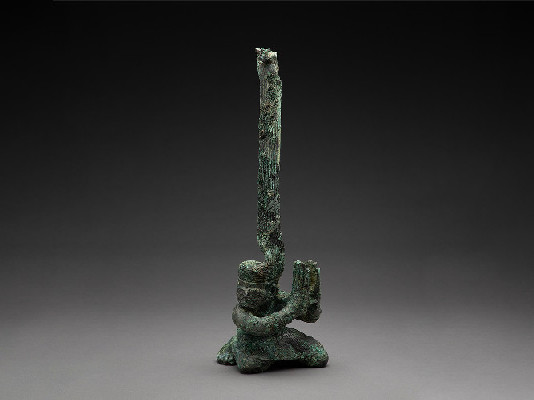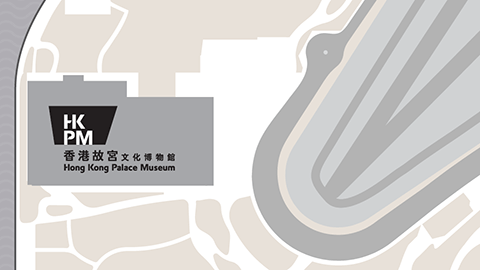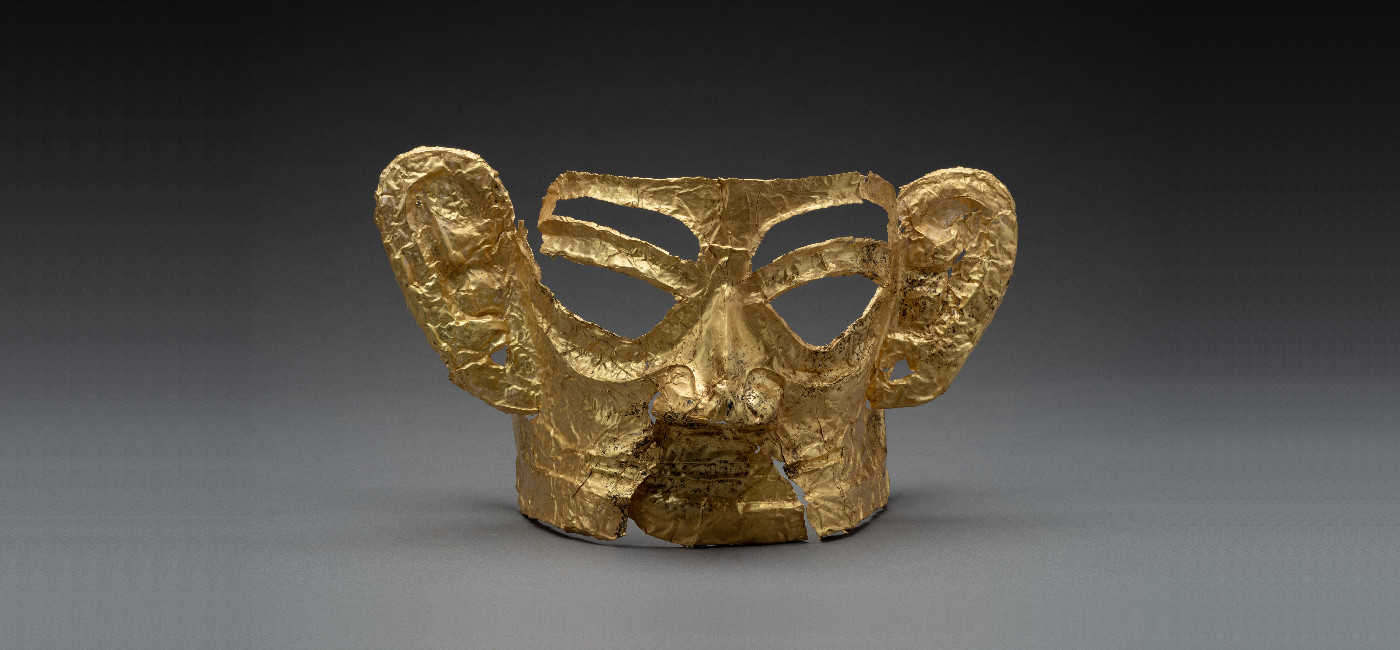The three-and-half-month-long exhibition, solely sponsored by Bank of China (Hong Kong) and to be launched before the National Day holidays, features spectacular recent archaeological discoveries at Sanxingdui. Ticket sales start on 1 September 2023.
The Hong Kong Palace Museum (HKPM) is delighted to celebrate the 2023 National Day holidays by launching its new special exhibition “Gazing at Sanxingdui: New Archaeological Discoveries in Sichuan” (“Gazing at Sanxingdui”), which will be on display from 27 September 2023 to 8 January 2024. “Gazing at Sanxingdui” is co-organised by the HKPM, the Sanxingdui Museum in Guanghan, and the Jinsha Site Museum in Chengdu, and is supported by the Sichuan Provincial Institute of Cultural Relics and Archaeology and the Chengdu Institute of Cultural Relics and Archaeology. Bank of China (Hong Kong) is the Sole Sponsor of this special exhibition. Tickets for this special exhibition for September and October 2023 will be available for purchase from 1 September 2023 at 10am.
Showcasing 120 artefacts with 23 grade-one national treasures, many of them are displayed outside Sichuan for the first time
|

Kneeling figure with twisted head © Sanxingdui Museum
|

Grand mythical creature © Sanxingdui Museum
|
“Gazing at Sanxingdui” highlights new archaeological discoveries at Sanxingdui in Sichuan province, featuring 120 bronze, jade, gold, and pottery objects dating to 2,600–4,500 years ago. Nearly half of these were unearthed in the most recent excavations at the Sanxingdui site between 2020 and 2022, and many are exhibited outside Sichuan for the first time, such as bronze heads, mythical creatures, eye-shaped objects, dragon-shaped objects, a hybrid tiger-dragon figure, as well as a jade rectangular stand with animal face and phoenix-bird motifs, which are currently on display at the new Sanxingdui Museum in Guanghan, Sichuan.
Among these 120 priceless artefacts are 23 grade-one national treasures, including the bronzes unearthed in 1986 and on loan from the Sanxingdui Museum: a bronze head with gold mask, a mask with protruding pupils, a figure with animal headdress, a zun-vessel, and the stand of a bronze tree. 18 of the artefacts on display were unearthed from 2001 onwards and are loaned from the Jinsha Site Museum in Chengdu, including grade-one national treasures dating back over 3,000 years: a bronze eye-shaped object; two jade yue-axes excavated in 2001, which will be displayed in Hong Kong for the first time; and a gold trumpet-shaped object with openwork swirling cloud motifs discovered in 2007.
Latest discoveries in Sichuan demonstrate the remarkable achievements of the ancient Shu civilisation, presenting the “diversity in unity” developmental pattern of Chinese civilisation
The ancient Shu civilisation, represented by the Sanxingdui culture in Sichuan, is an integral part of the “diversity in unity” development of Chinese civilisation and demonstrates the remarkable achievements of the contemporaneous cultures in the upper Yangtze River region. Showcasing cultural relics excavated from the Sanxingdui, Jinsha, and Baodun sites, this exhibition’s four thematic sections present the art, urban life, belief systems, and origins and legacy of the ancient Shu civilisation while exploring achievements in art and technology across the Chengdu Plain.
The first section of the exhibition, “Timeless Gazes”, features various bronze human heads, masks, and depictions of deities. In different forms and shapes, they are expressive and magnificent, futuristic yet ancient. These gazes suggest stories now lost to history, guiding us through time and space. The second section, “Urban Life at Sanxingdui”, reconstructs Sanxingdui’s urban landscape as one of the largest Bronze Age metropolises in East Asia. This urban centre housed modest dwellings as well as one of the biggest palatial or ritualistic constructions of its time in China. The section will also display a large number of bronze, jade, gold, and pottery objects created by the city’s finest craftsmen. The third section, “Gods and Shamans at Sanxingdui”, explores Sanxingdui people’s religious activities and their understanding of the cosmos. Through advanced technologies, archaeologists have restored bronze altars and statues to recreate the rituals conducted by the people of Sanxingdui. The final section, “The Origin and Inheritance of Sanxingdui”, traces Sanxingdui’s origins and legacy and explores how the Sanxingdui culture and other closely connected cultures influenced and integrated into each other over time, forming the “diversity in unity” developmental pattern of Chinese civilisation. The exhibition also summarises the archaeological discoveries in and research on Sanxingdui and other areas of ancient Sichuan, celebrating a century of achievements in modern Chinese archaeology.
Dr Louis Ng, Museum Director of the HKPM, said, “The HKPM is thrilled to launch the special exhibition ‘Gazing at Sanxingdui’ as a highlight of this year’s National Day holidays. We look forward to taking our audiences back to 3,000 to 5,000 years ago, to gaze at the magnificent civilisation of Sanxingdui and other parts of Sichuan and dive into the lives and cultural interactions among different regions and ethnic groups in ancient China. This exhibition also marks the debut of the HKPM’s ‘The Origin and Development of Chinese Civilisation’ special exhibition series, testifying to the HKPM’s mission of promoting the inheritance of the splendid Chinese culture. We sincerely hope that this exhibition will appeal to visitors from Hong Kong, the Mainland, and abroad, deepening their understanding of the formation and development of the 5,000-year Chinese civilisation, its continuity, inventiveness, unity, inclusiveness, and emphasis on peace and harmony, as well as its contributions to world civilisations.”
Tang Fei, Director of the Sichuan Provincial Institute of Cultural Relics and Archaeology, said, “The precious cultural relics unearthed from the Sanxingdui and Jinsha sites represent the splendour of the ancient Shu material and spiritual civilisation, an important part of Chinese civilisation. These artefacts reflect the remarkable achievements of the civilisation developed in the upper Yangtze River region before the Qin dynasty. The ancient Shu civilisation had close connections with the civilisations in the Yellow River region and the middle and lower Yangtze River regions. This demonstrates the ‘diversity in unity’ configuration of Chinese civilisation, which is highly significant in the history of Chinese and world civilisations. We are looking forward, with great anticipation, to the presentation of these precious cultural objects at the Hong Kong Palace Museum to Hong Kong citizens as well as visitors from the Mainland and around the world. We aim to deepen visitors’ understanding of the historical value of the glorious ancient Shu civilisation, broaden the international impact of Chinese culture, and promote cultural exchange and mutual understanding among world civilisations.”
Special opening arrangements during Golden Week Holidays to welcome visitors
“Gazing at Sanxingdui” special exhibition will run from 27 September 2023 to 8 January 2024 in Gallery 8 at the HKPM. Tickets for this special exhibition will be priced at HKD150 for adults and HKD75 for visitors eligible for concessions*. In anticipation of the high visitor flow during the National Day Golden Week holiday, the HKPM will remain open on 3 October (Tuesday), a normal museum closure day. The tickets for “Gazing at Sanxingdui” special exhibition will include access to thematic exhibitions in Galleries 1 to 7 and the “Gazing at Sanxingdui” special exhibition in Gallery 8. The special exhibition “Radiance: Ancient Gold from the Hong Kong Palace Museum Collection and the Mengdiexuan Collection” currently on display at Gallery 9 will be extended to 3 October 2023 to welcome visitors during the Golden Week. Ticket holders for admission to “Gazing at Sanxingdui” special exhibition on or before 3 October 2023 can visit this special exhibition as well.
Tickets can be purchased from 1 September 2023 through the HKPM website, the West Kowloon Cultural District website or mobile app, the online ticketing platform Cityline, and the online platforms of ticketing partners China Travel Service (Hong Kong) Limited, Fliggy, KKday, Klook and Trip.com.
To accompany this special exhibition, the HKPM will organise a series of scholarly programmes and public learning activities about the ancient Shu civilisation, encouraging exchanges between Hong Kong and Sichuan in archaeological and cultural studies and celebrating the archaeological achievements of China over the past 100 years.
*Concessions apply to children (aged 7 to 11), full-time students, seniors (aged 60 and above), persons with disabilities (with one companion), and CSSA recipients.
Remarks
About the Hong Kong Palace Museum
The Hong Kong Palace Museum aspires to become a leading institution on the study and appreciation of Chinese art and culture while advancing dialogue between world civilisations. The Hong Kong Palace Museum is a collaborative project between the West Kowloon Cultural District Authority and the Palace Museum, and is funded by The Hong Kong Jockey Club Charities Trust with a donation of HK$3.5 billion for its establishment, as well as some of the annual exhibitions and education programmes in 2023–2031.
Embracing new curatorial approaches, the Museum combines a Hong Kong perspective with a global vision to present precious artefacts from the Palace Museum and other important cultural institutions around the world. Through research, exhibitions, and educational and professional exchange programmes, the Museum aims to build international partnerships and position Hong Kong as a global hub for art and culture. At heart a resource that belongs to the local community, the Museum strives to inspire community engagement, foster dialogue, and promote creativity and interdisciplinary collaboration.
About the West Kowloon Cultural District
The West Kowloon Cultural District is one of the largest and most ambitious cultural projects in the world. Its vision is to create a vibrant new cultural quarter for Hong Kong on 40 hectares of reclaimed land located alongside Victoria Harbour. With a varied mix of theatres, performance spaces, and museums, the West Kowloon Cultural District will produce and host world-class exhibitions, performances, and cultural events, providing 23 hectares of public open space, including a two-kilometre waterfront promenade.
https://www.westkowloon.hk/










